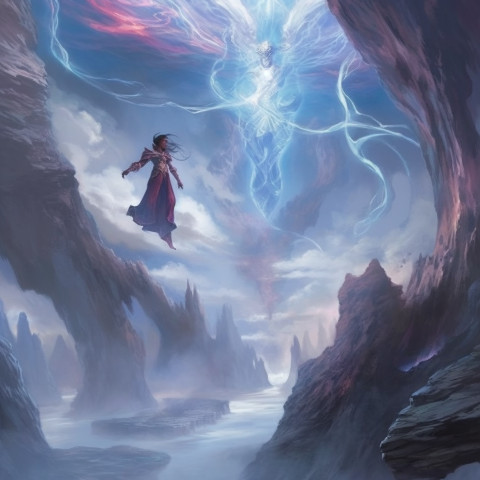Recently, DMDavid posed a fascinating question on Twitter about the origins of the Astral and Ethereal Planes in the early editions of Dungeons and Dragons (DnD). As a devoted Tabletop Roleplaying Game enthusiast, I’d like to delve into this intriguing query and shed some light on the cultural and historical influences that shaped these iconic facets of the game.

As an side, if you haven’t had a chance to check out DMDavid’s Blog, I highly recommend it.
Understanding the Historical Context To truly appreciate the distinction between the Astral and Ethereal planes in DnD, we need to consider the historical context. The inception of DnD occurred during a transformative period in the United States, post the counter-culture revolution, which significantly influenced the game’s development.
This counter-culture era witnessed a surge in a form of pseudo-spiritualism, centered around mind enlightenment and contacting higher planes, starkly contrasting previous generations’ spiritual practices, which were more focused on spirit communication and ancient powers.
The Ethereal and Astral Planes: Inspired by Cultural Icons In the minds of the DnD creators, the Ethereal plane became a domain of ghosts and the dead, drawing inspiration from pop culture figures like Aleister Crowley and skeptics like Harry Houdini. Conversely, the Astral Plane symbolized the realm of the mind, influenced by counter-culture figures like Aldous Huxley and Timothy Leary, or popular culture authors like Carlos Castaneda.
As DMDavid rightly noted, the depiction of these planes in DnD also heavily reflects the nerd pop-culture of that time, including elements from comic book characters like Doctor Strange or from movies like the Hammer Horror Films. However, rather than tracing back to a single source, it’s more accurate to understand these planes as a reflection of the era’s prevailing thoughts and influences.
The Game Design Perspective From a game design viewpoint, the Ethereal and Astral planes provided a neat division between the realm of ghosts and the realm of psionics. This division addressed two main issues. First, it offered thematic consistency, neatly categorizing monsters and adventure themes. Second, it helped differentiate the rules for magic and ghosts from those for psionics, which were distinct in early D&D.
Interestingly, the original Dungeon Master’s Guide had a staggering 24 planes, slicing not just along alignment lines but also across various narrative tones, such as emotion, thought, spirituality, and more.
The Modern Perspective Fast forward to modern D&D, the distinction between the Astral and Ethereal planes seems to have lost much of its significance. The 5th edition (5e) appears to lean towards streamlining gameplay, favoring reduced complexity over the detailed cosmological intricacies of early D&D. For instance, Asmodeus has been elevated as the face of all devils, and the Nine Hells is now the most often cited plane.
While 5e continues to reference other planes, its focus is more on simplifying references for seamless play. This approach contrasts with the early days of D&D, where the cosmology’s complexity was part of the allure, sparking a sense of the unknown in its audience.
In the end, each player must decide whether this shift towards simplification is beneficial. Regardless of the answer, the origins and historical context of the Astral and Ethereal planes in DnD provide a fascinating glimpse into the game’s rich and diverse influences, adding another layer of depth to this already immersive game.